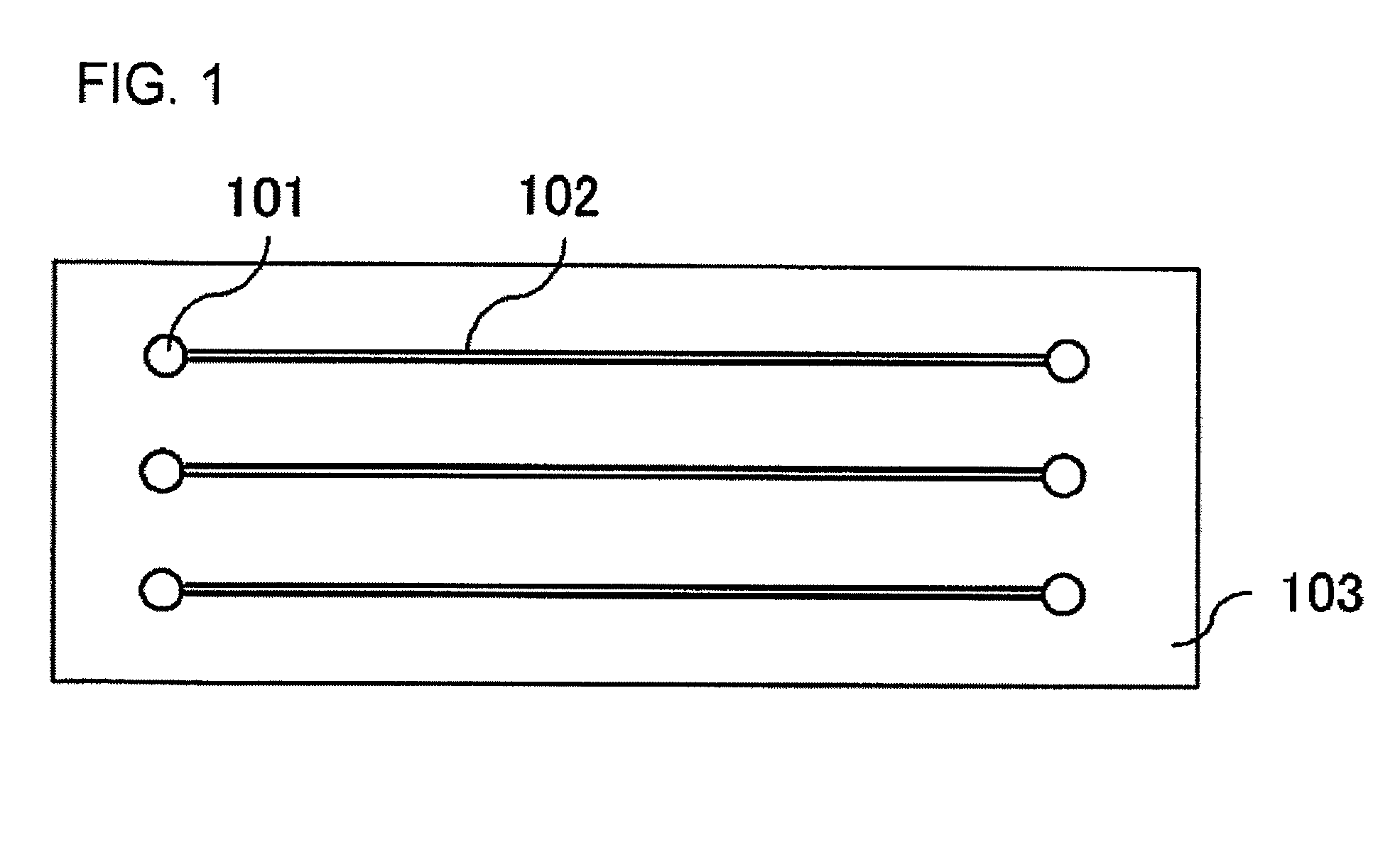Biochip
a technology of biochips and microchips, applied in the field of biochips, can solve the problems of immobilized protein, coating film peeling, insufficient ability of biochips to prevent non-specific adsorption, etc., and achieve the effect of suppressing non-specific adsorption or bonding, excellent detection sensitivity, and excellent detection sensitivity
- Summary
- Abstract
- Description
- Claims
- Application Information
AI Technical Summary
Benefits of technology
Problems solved by technology
Method used
Image
Examples
first embodiment
[0146]The present embodiment relates to a biochip substrate having, immobilized on a substrate (solid phase substrate), a capture substance for capturing a biologically active substance. This biochip substrate has a macromolecular substance on the surface of the substrate. The macromolecular substance has a first unit containing a phosphorylcholine group and a second unit containing a carboxylic acid derivative group. The constituent members of the biochip substrate are explained below.
Macromolecular Substance
[0147]The macromolecular substance having the first unit containing a phosphorylcholine group and the second unit containing a carboxylic acid derivative group is a polymer having both the property of suppressing nonspecific adsorption of a biologically active substance and the property of immobilizing a biologically active substance. The phosphorylcholine group contained in the first unit plays a role in suppressing the nonspecific adsorption of a biologically active substance...
second embodiment
[0198]In the present embodiment, the immobilization of a capture substance on a biochip substrate and the detection of a biologically active substance of the first embodiment are carried out under the following conditions.
Immobilization of Capture Substance
[0199]In the present embodiment also, as in the case of the first embodiment, when immobilizing a capture substance on a biochip substrate, a method in which a liquid in which the capture substance is dissolved or dispersed is spotted may be used.
[0200]Furthermore, in the present embodiment, an immobilization reaction of a capture substance is carried out under neutral or alkaline conditions. For example, the liquid used for spotting and in which the capture substance is dissolved or dispersed is made neutral or alkaline. It is thereby possible to more reliably react the capture substance and an active ester group in the second unit of the macromolecular substance to thus form a covalent bond. As such conditions, for example, the ...
third embodiment
[0207]In the present embodiment, immobilization of a capture substance is carried out using the biochip substrate described in the first embodiment under the conditions described in the second embodiment. The conditions for immobilization of the capture substance may be the conditions described in the second embodiment.
[0208]Furthermore, in the present embodiment, after immobilization of the capture substance, a liquid containing a biologically active substance that is a detection target is contacted with the macromolecular substance on the substrate to thus allow the capture substance to capture the biologically active substance. During this process, the pH of the liquid containing the biologically active substance is equal to or less than the pH of the liquid containing the capture substance, and preferably lower than the pH of the liquid containing the capture substance.
[0209]It is thereby possible to more reliably suppress reaction of the biologically active substance with the a...
PUM
| Property | Measurement | Unit |
|---|---|---|
| temperature | aaaaa | aaaaa |
| temperature | aaaaa | aaaaa |
| thickness | aaaaa | aaaaa |
Abstract
Description
Claims
Application Information
 Login to View More
Login to View More - R&D
- Intellectual Property
- Life Sciences
- Materials
- Tech Scout
- Unparalleled Data Quality
- Higher Quality Content
- 60% Fewer Hallucinations
Browse by: Latest US Patents, China's latest patents, Technical Efficacy Thesaurus, Application Domain, Technology Topic, Popular Technical Reports.
© 2025 PatSnap. All rights reserved.Legal|Privacy policy|Modern Slavery Act Transparency Statement|Sitemap|About US| Contact US: help@patsnap.com



